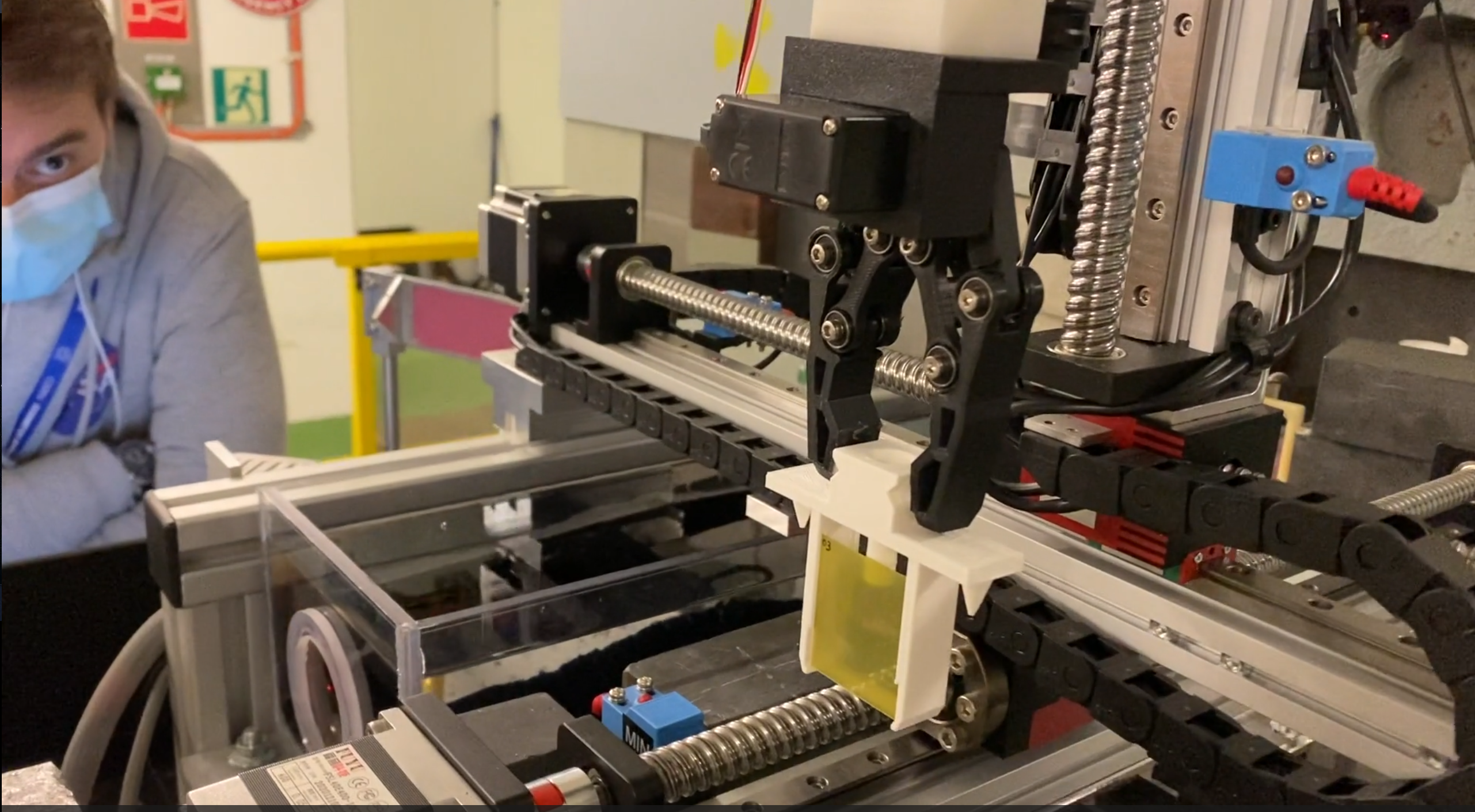C-Robot used at CLEAR to advance cancer research
Scientists at CLEAR, the CERN Linear Electron Accelerator for Research, are shooting electrons at zebra fish eggs. This project, which may sound strange at first, is part of an R&D collaboration between CERN and Lausanne University Hospital (CHUV) which aims to advance cancer radiation treatment.
The starting point was FLASH radiotherapy, which delivers one fast treatment to the cancer tumour, rather than multiple slower ones — reducing treatment time to milliseconds rather than minutes. The advantage of this is to spare healthy tissue from the negative effects of radiation.
CHUV is a world-leader in FLASH therapy studies, but the hospital faced difficulty in obtaining high-energy electrons. That’s where CLEAR comes in. CLEAR produces very high-energy electron beams, within the 60-220 MeV range. At these very high energies, electrons can penetrate the body to damage deep-seated cancer cells.
A practical challenge the researchers confronted was getting the living tissue samples — the fish eggs — into and out of the CLEAR beamline. The fish egg samples need to be inserted, irradiated, and removed quickly, while the accelerator is running. See video.
Since this process cannot be done manually with sufficient speed, CLEAR researchers built a remote-controlled robot to do the job for them. The C-Robot changes the fish egg samples and dose measurement films whilst the accelerator is running, allowing multiple samples to be tested in a single run.
The C-Robot was fully designed and built at CERN. The facilities at IdeaSquare were integral to the project:
Scientists from CLEAR used IdeaSquare’s 3D printer to create the C-Robot grabber, as well as 4 different kinds of sample holders.
This example demonstrates how fundamental research can have wider societal applications. If successful, the scientists hope to make the FLASH treatment device compact enough to be installed into existing hospitals.
For more information: https://home.cern/news/news/knowledge-sharing/clear-study-paves-way-novel-electron-based-cancer-therapy
